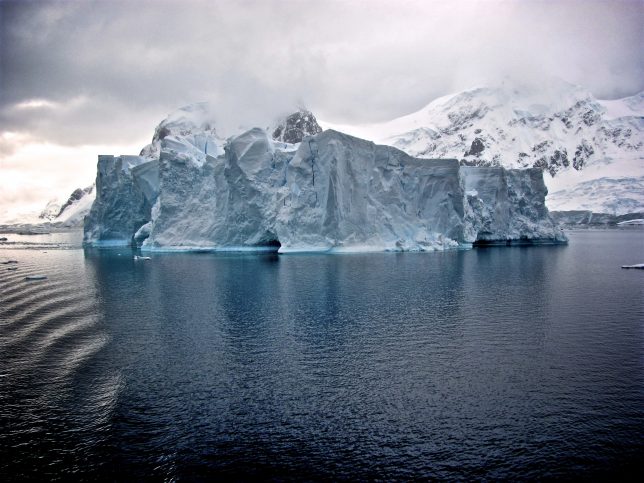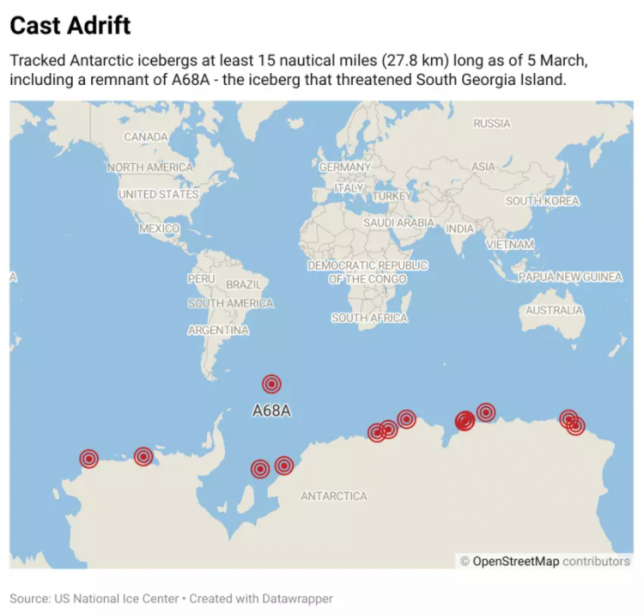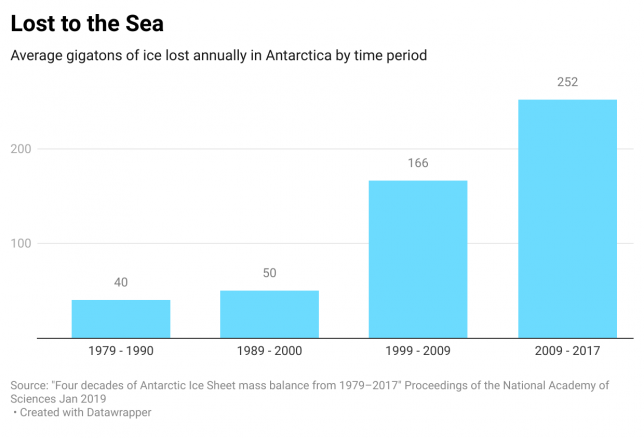The more we learn about Antarctica, the greater the urgency to act on climate change.

By John Letzing, Digital Editor, Strategic Intelligence, World Economic Forum (Public License).
- A number of troubling discoveries have been made related to Antarctica.
- Reports point to record ice shelf melt contributing to sea level rise.
- Curbing emissions could limit the impact of warming on the continent.
In the pitch-black depths beneath 900 metres of Antarctic ice shelf, scientists recently made a curious discovery: something’s living down there.
The detection of sponges and other “unidentifiable” animals that defy established science is just one in a steady stream of revelations about a forbidding region. Frequently, these insights help build a stronger case for doing more to combat climate change.
Antarctica may be remote and desolate, but it could affect us all relatively soon. Sea levels are now expected to rise more quickly than had been anticipated as recently as 2019, and melting Antarctic glaciers and ice sheets are a contributing factor. The continent has been losing an estimated 150 billion metric tons of ice every year since 2002.
According to results published last week of a study that strapped sensors to seals, rapidly melting Antarctic glaciers are changing nearby ocean water more than realized – with implications for the climate and future sea level rise. A study published not long before that suggested the second-biggest ice shelf on the Antarctic peninsula experienced record melting during the 2019-2020 summer season.
Last year, it was discovered that the ice shelves making up about three-quarters of Antarctica’s coastline, and helping to hold glaciers in place, are melting faster than they’re being replenished. Ultimately, the continent holds enough ice to raise sea levels by 60 metres. Since 1880, global mean sea level has risen by only about 24 centimetres.
As ice departs from Antarctica it can be lethal; a massive iceberg that broke off an ice shelf more than three years ago was bearing down on South Georgia Island and its population of penguins before recently breaking up. Experts say a changing climate is pushing more ice to Antarctica’s edges, where it can encounter warming water and snap off.

Image: World Economic Forum
Earlier this month, an iceberg bigger than New York City broke off the Brunt Ice Shelf in Antarctica. Scientists say this was part of a natural process and didn’t have direct ties to climate change – though such “calving” events have become increasingly frequent.
Antarctica recorded its hottest days on record slightly more than a year ago, but conditions remain far from ideal for human activity (they are, however, great for preserving a lost wallet for a half-century). Still, changes in the region can impact more populated parts of the world in ways that go beyond rising sea levels.
For example, the polar vortex over Antarctica, a wind pattern driven by the contrast between the frigid pole and the warmth at lower latitudes, can impact temperatures and rainfall patterns in Australia; a weakened polar vortex can induce hot and dry extremes there.
There are a number of things just about anyone can do to help blunt the effects of climate change on Antarctica and the rest of the world, ranging from flying less to eating less meat. If we manage to cut emissions and hold warming to 2°C above pre-industrial levels, sea level rise by the end of this century could be just half of what it would be otherwise.

The notion of ice melt in Antarctica contributing to sea level rise isn’t merely theoretical. A study published in 2019 estimated that a six-fold increase in yearly ice mass loss in Antarctica caused global sea levels to rise by more than half an inch between roughly the time Margaret Thatcher became prime minister in the UK, and Emmanuel Macron became the president of France.
For more context, here are links to further reading from the World Economic Forum’s Strategic Intelligence platform:
- Scientists turned to seals for that Antarctic glacial meltwater study because harsh winter conditions limit the use of ships or planes to make observations, according to this report. Seven southern elephant seals and seven Weddell seals were deployed. (Science Daily)
- The discovery of life 900 metres beneath Antarctic ice was an accident, according to this report – researchers had drilled a borehole in search of sediment samples, and instead found 13 sponges and 22 unidentifiable “stalked organisms.” (Big Think)
- Australia’s plans to build an airport with a 2.7-kilometre paved runway in eastern Antarctica is deemed controversial, according to this report – due to its potential environmental impact, and “major” geopolitical concerns. (The Diplomat)
- A recent study found that the West Antarctic Ice Sheet has declined steadily, as expected, but the East Antarctic Ice Sheet is far more sensitive to spikes in the weather than thought – which could make modelling of sea level rise more accurate, according to this report. (Eos)
- This piece argues that preventive measures have to be taken to limit the impacts of climate change, tourism, fishing, and research infrastructure on the western Antarctic Peninsula – before it’s too late. (Nature)
- According to this report, the ability of waves to transport large microplastics faster than previously thought helps us understand why they’re now found throughout the ocean – including around Antarctica. (The Conversation)
- Turns out we may have had it all wrong when it comes to melting icebergs. This study found that while current models assume they melt uniformly, they actually do so at different speeds based on shape – a discovery that could help better assess climate change. (Science Daily)
On the Strategic Intelligence platform, you can find feeds of expert analysis related to Antarctica, Climate Change and hundreds of additional topics. You’ll need to register to view.
